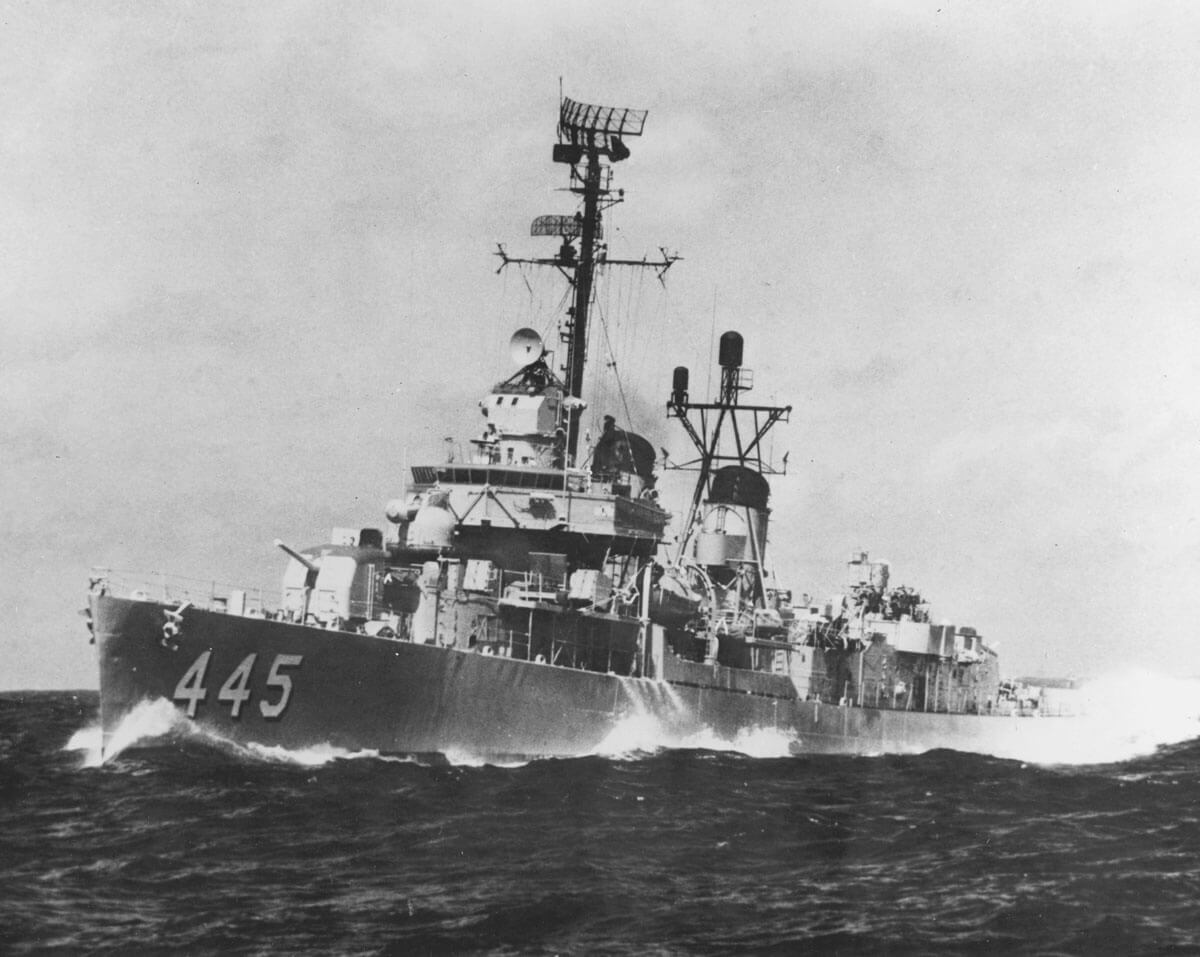USS Fletcher (DD-445): The Leader Of Its Class

DD-445 was the first of 175 Fletcher class destroyers built for the U.S. Navy. USS Fletcher was named for World War I Navy Admiral and Distinguish Service Medal recipient, Frank Friday Fletcher. The 2,100 ton destroyer was laid down at Federal Shipbuilding & Dry Dock Company in Kearney, N.J. on October 2, 1941.
Fletcher was commissioned in June of 1942 and immediately began making a name for itself during World War II.
Battle of Guadalcanal
USS Fletcher, led by Commander William M. Cole and Lieutenant Commander Joseph C. Wylie, was sent to the island of Guadalcanal in October of 1942 to assist Allied forces in the U.S.’ first major offensive undertaking against the Japanese in World War II. The Southwest Pacific island was relatively obscure to that point but was an important geopolitical location for the U.S. to flex with military might against a Japanese navy that was, to that point, still considered superior.
Fletcher was ultimately nicknamed “Lucky 13” for several reasons, but mainly because its hull numbers added up to 13, and it was the 13th ship in line for Task Force 67 (Cactus Strike) during the Friday the 13th Naval Battle of Guadalcanal. The 40mm and 20mm guns from the destroyer shot down six enemy planes from November 11 to 13, including approaching torpedo planes that could have sank it or one of its sister vessels.
No crew members were injured during the battle and Fletcher came away completely unscathed.
Battle Of Tassafaronga
The success of Captain Cole and USS Fletcher at Guadalcanal earned it the lead position in the Battle of Tassafaronga 2 weeks later. Despite Fletcher positioning itself and the other four destroyers in the perfect position for a torpedo attack on Japanese destroyers, Rear Admiral Carleton H. Wright ordered the ships to stand down.
The delay to open fire is second-guessed to this day, as torpedos from Japanese destroyer Takanami struck American cruisers Minneapolis and New Orleans, severely damaging them. USS Northampton (CA-26) was struck and ultimately sank. Fletcher was ordered to find and aid its damaged sister ships. The crew ultimately saved 646 survivors from Northampton before it disappeared into the sea.
Fletcher fired a spread of torpedoes at enemy ships but failed to connect with one during the battle. Tassafaronga is largely considered a tactical victory for the Japanese, but the U.S. Navy successfully delayed them from providing supplies to their troops on the island. Due to lack of adequate supplies, Japanese forces were forced to evacuate the island 3 months later.
Later Years
Fletcher endured its worst damage on Valentine’s Day in 1945 when Japanese artillery fire struck and killed eight crew members during the Battle of Manila Bay. Despite being heavily damaged, the crew continued firing upon Japanese aircraft, earning the ship yet another nickname, the “Fighting Fletcher.”
The ship was retired at the conclusion of World War II but was recommissioned in October of 1949 as DDE-445. It was one of the first ships to arrive in the Western Pacific when the Korean War broke out in 1950. Fletcher was redesigned DD-445 before serving in Vietnam from 1965 to 1969.
Fletcher earned a total of 15 battle stars before being decommissioned in 1969. Despite efforts to preserve the ship as a museum exhibit, Fletcher was ultimately sold for scrap metal in 1972.
Asbestos Exposure and Mesothelioma
Navy veterans who served on USS Fletcher and employees who built the ship at Federal Shipbuilding & Dry Dock Company were very likely exposed to asbestos at some point in time. Asbestos was used extensively at shipyards and in building navy vessels through the 1970s because of its heat-resistant properties.
It can take 15 to 60 years before any visible symptoms of mesothelioma including a chronic cough, chest pain, unexplained weight loss, and shortness of breath to show up. The sooner you are diagnosed, the more treatment options you will have.
If you’ve been diagnosed with mesothelioma, contact us, we have years of experience litigating asbestos-exposure cases.
